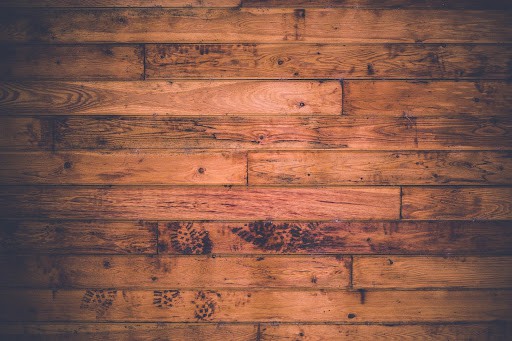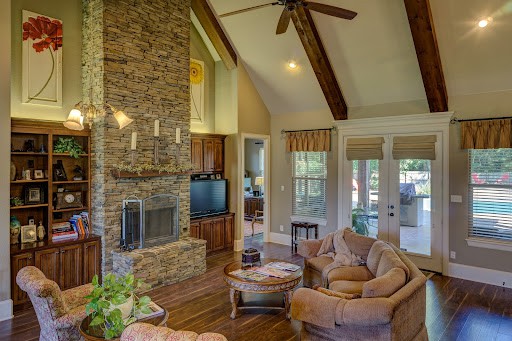There are many benefits to having hardwood floors in your home, ranging from providing a traditional look to creating a long-lasting and sturdy foundation for a room. Despite all their strengths, hardwood floors, like other parts of a building, start to deteriorate over time and after years of wear and tear will need replacing.
If you are looking to make your home more liveable or increase its value, then replacing cracked and creaky hardwood floors is essential. Older houses tend to need more attention when it comes to maintenance and renovation, particularly if they have aged hardwood floorboards. Below are the six common signs that it’s time to replace your old hardwood flooring.
1. Water Damage
Contents
One of the biggest problems with hardwood flooring is its susceptibility to water damage, and although engineered hardwood is more resistant to moisture than solid hardwood, both varieties end up rotting, staining, or warping when exposed to moisture over long periods of time. When considering the help of a contractor, it is important that you check their reviews online, and they come to inspect the flooring carefully. This is when replacing wooden floorboards quotation is calculated. Unfortunately, water damage often means the whole floor will need to be replaced, especially if it has started to rot.
To protect your hardwood flooring from occasional leaks and spills, it should be refinished with a high-quality wood seal or stain every four to six years. However, if your home has experienced serious flooding or plumbing issues, then more permanent damage can occur, and a replacement is necessary.
2. Exposed Nails
Usually exposed nails are easy to spot, however when unnoticed they can cause painful injuries to your family or guests. Typically, exposed nails occur in parts of the home with the most foot traffic such as kitchens, hallways, and living rooms where people are more likely to stub a toe or snag their socks. In addition to being trip hazards, exposed nails make floorboards look unattractive and may lead to more creaks.
Just like marks and scratches, exposed nails are not a reason to replace the whole hardwood floor and can be repaired quite easily. On the other hand, if exposed nails start to appear on many parts of the flooring, then replacing all of the floors may be required.
3. Discolored Wood
There are a few reasons why hardwood floors change color, amongst them is long-term exposure to sunlight causing floorboards to look faded and washed out. Hardwood floorboards can also become discolored as a result of water damage with gray stains and discoloration often being a telltale sign, however, it will gradually get darker and turn black over time if left unaddressed.
Faded floorboards and those stained from light water damage can be fixed up with a refinish or restain, however, hardwood floors with many areas of dark or black stains may suggest that the damage is extensive and irreparable.
4. Floorboards That Creak or Move
If your floorboards are becoming excessively creaky and create plenty of irritating noise, then it might be time to check if the floor needs repairs or replacing. The common cause of creaking floorboards is the wood rubbing against itself or the subfloor structure, often this is a result of aging, although it can also indicate an issue with the structural integrity of the flooring.
Another sign your hardwood floors need some attention is moving boards that bend or shift when someone walks across them, as this is a common symptom of cracks in the foundational structure or serious water damage. Other symptoms of structural damage are frequent dipping or swelling of the floor when walked across.
5. Noticeable Marks and Scratches
Most homes are busy places, with people regularly walking around and sometimes rearranging furniture, therefore it is no surprise that hardwood flooring can acquire many marks and scratches over its lifespan. If most of your floor is covered with unsightly scratches, chips, or gouges that have cut through the stain making the wood boards more susceptible to water damage, then it is probably time to consider replacing your hardwood floor. At this point, even relatively small spills and amounts of moisture can seep into wood floorboards and result in cracking, swelling, and warping as well as damage to the frame.
6. Wear & Tear
Hardwood floors are well-known to be durable and many last for years, however just like other parts of a house, years of frequent walking takes their toll on hardwood floors, and they start to show obvious signs of aging such as stained or worn down areas near entrance ways. After a time, the stain can completely wear away and leave the wood vulnerable to splintering and warping, however, these problems can be avoided by restaining excessively worn areas of flooring.
Hardwood flooring is a great addition to a home as it provides flooring that looks attractive in addition to being durable, cleaning-friendly, and easy to walk around on. Hardwood floors can last for years, however, as with most natural materials they start to deteriorate, especially if damaged by water. Therefore, if you’ve had a hardwood floor for several years or just moved into an older home, you should understand the typical signs that it is time to replace your hardwood floor.

